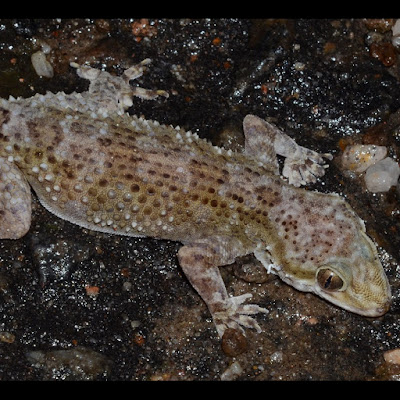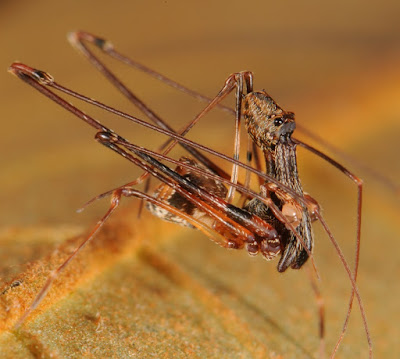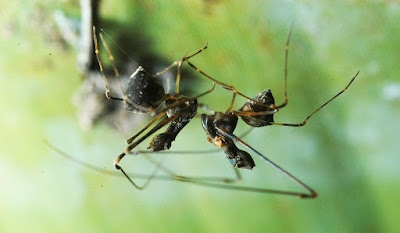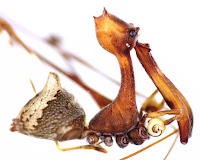[Most Recent Entries] [Calendar View]
Wednesday, January 17th, 2018
| Time | Event | ||||
| 10:18a | [Herpetology • 2018] Hemidactylus vanam • A New Cryptic, Rupicolous Species of Hemidactylus Oken, 1817 (Squamata: Gekkonidae) from Meghamalai, Tamil Nadu, India
Abstract A distinct new gecko of the genus Hemidactylus is described from the Meghamalai massif in Tamil Nadu, India. This large sized (average SVL 88.2±16.0 to at least 112.2 mm), cryptic, rock-dwelling species is superficially similar to its tuberculate South Asian congeners of comparable size, but can be distinguished from them in having 17–19 longitudinal rows of fairly regularly arranged, strongly keeled, striated tubercles with the two most medial parasagittal rows smaller, flatter, strongly keeled and rounded, increasing in size laterally and becoming strongly conical at the flanks; 8–10 and 10–12 sub-digital lamellae under the first and fourth digits respectively of both manus and pes; 17–22 femoral pores on each side separated medially by a diastema of 10–11 poreless scales; 11–15 supralabials and 9–14 infralabials. Molecular data supports the distinctiveness of this species and helps ascertain its phylogenetic position within the larger Indian Hemidactylus clade. Keywords: Reptilia, Hemidactylus vanam sp. nov., H. prashadi group, cryptic species, Western Ghats, eastern escarpment
Etymology. The specific epithet is a noun in apposition honouring Vanam (pronounced vʌnʌm), a nongovernmental organization based in Theni District, Tamil Nadu, India, for carrying out exemplary conservation work in the region. Their unwavering support has been vitally important to our work in the Meghamalai Wildlife Sanctuary. Suggested Common Name. Meghamalai Rock Gecko  R. Chaitanya, Aparna Lajmi and Varad B. Giri. 2018. A New Cryptic, Rupicolous Species of Hemidactylus Oken, 1817 (Squamata: Gekkonidae) from Meghamalai, Tamil Nadu, India. Zootaxa. 4374(1); 49–70. DOI: 10.11646/zootaxa.4374.1.3 | ||||
| 11:52a | [Arachnida • 2018] A Review of the Madagascan Pelican Spiders of the Genera Eriauchenius O. Pickard-Cambridge, 1881 and Madagascarchaea gen. n. (Araneae, Archaeidae)
Abstract An endemic genus of Madagascan spiders (Araneae, Archaeidae, Eriauchenius) is revised. All 20 species of Eriauchenius are described and keyed, of which 14 are new species: Eriauchenius andriamanelo sp. n., Eriauchenius andrianampoinimerina sp. n., Eriauchenius goodmani sp. n., Eriauchenius harveyi sp. n., Eriauchenius lukemacaulayi sp. n., Eriauchenius milajaneae sp. n., Eriauchenius milloti sp. n., Eriauchenius rafohy sp. n., Eriauchenius ranavalona sp. n., Eriauchenius rangita sp. n., Eriauchenius rixi sp. n., Eriauchenius sama sp. n., Eriauchenius wunderlichi sp. n., Eriauchenius zirafy sp. n. Additionally, six species of the new genus Madagascarchaea gen. n. are described and keyed, of which four are new species: Madagascarchaea fohy sp. n., Madagascarchaea lotzi sp. n., Madagascarchaea moramora sp. n., Madagascarchaea rabesahala sp. n. Diagnostic characters for the Madagascan and African genera are described, and based on these characters and previous phylogenetic analyses the following species transfers are proposed: Eriauchenius cornutus (Lotz, 2003) to Afrarchaea; Afrarchaea fisheri (Lotz, 2003) and Afrarchaea mahariraensis (Lotz, 2003) to Eriauchenius. Finally, we propose that the distribution of Afrarchaea be restricted to South Africa. While several Madagascan specimens have previously been identified as Afrarchaea godfreyi (Hewitt, 1919), we argue that these are likely misidentifications that should instead be Eriauchenius. Keywords: Afrarchaea, Palpimanoidea, new species, taxonomy Hannah M. Wood and Nikolaj Scharff. 2018. A Review of the Madagascan Pelican Spiders of the Genera Eriauchenius O. Pickard-Cambridge, 1881 and Madagascarchaea gen. n. (Araneae, Archaeidae). ZooKeys. 727: 1-96. DOI: 10.3897/zookeys.727.20222 Madagascar's ancient 'pelican spiders' are as striking as they are strange @NMNH po.st/7gmWzS via @SmithsonianMag 18 New Terrifying Assassin Spider Species Look Like Pelicans ibtimes.com/18-new-terrifying-assassin-s 18 species of pelican spiders with salad-tong faces discovered newsweek.com/18-species-cannibal-spiders-s |
| << Previous Day |
2018/01/17 [Calendar] |
Next Day >> |







